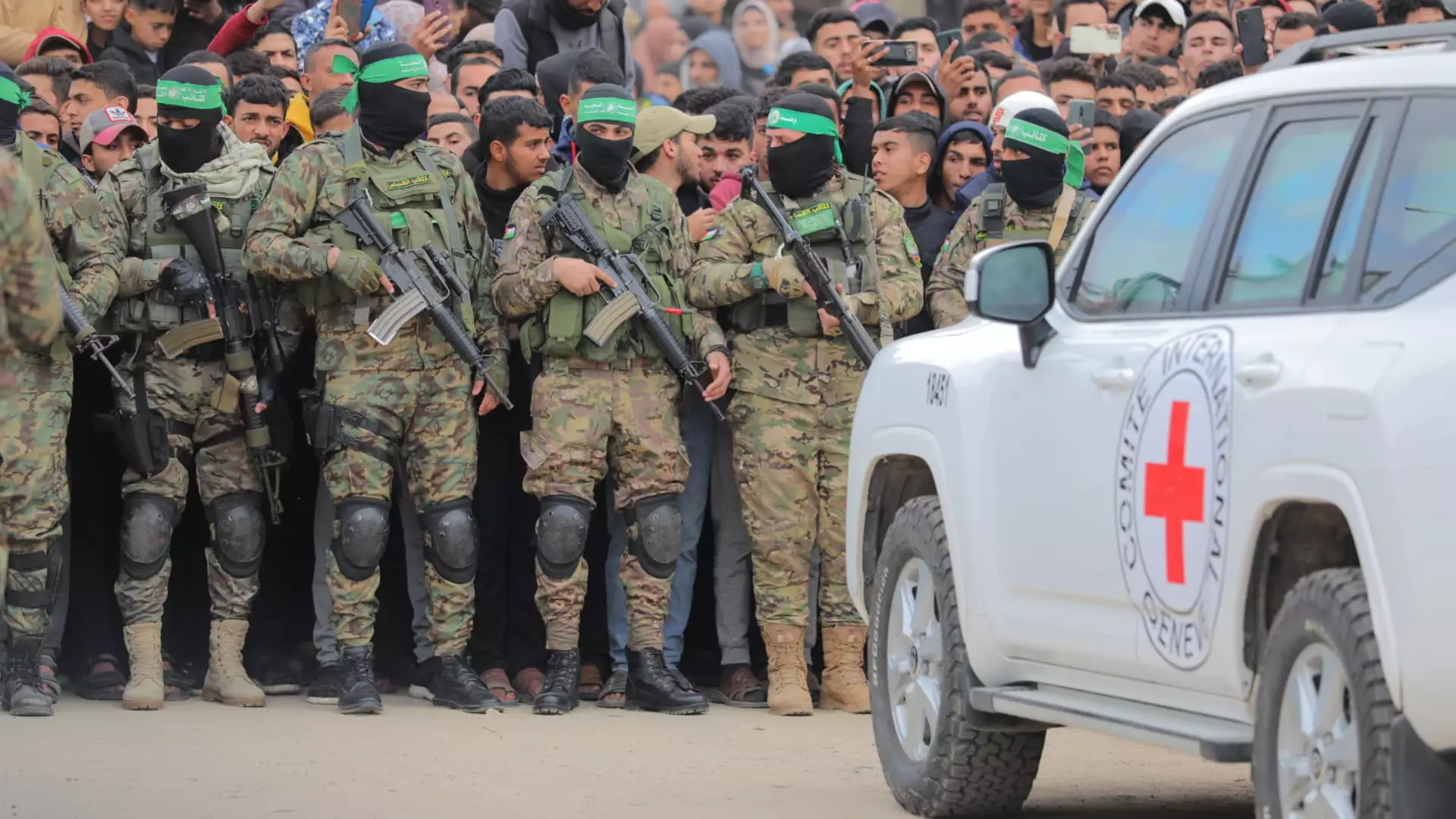On a tense Saturday, Israeli television broadcast the distressing and astonishing images of three Israeli hostages being released by the Palestinian militant group Hamas. These men—Ohad Ben Ami, Eli Sharabi, and Or Levy—had been captured during the brutal Hamas attack on October 7, 2023, which decimated parts of Israel and resulted in significant loss of life. Their appearances upon release were shocking; they looked emaciated and hollow-eyed, reflecting months of trauma and deprivation in captivity. This moment represents not just a humanitarian crisis but also the complexities of an ongoing conflict that shows no signs of a straightforward resolution.
The family members of these hostages have endured a harrowing 15-month ordeal, oscillating between hopelessness and optimism as the negotiations for their release unfolded. Michal Cohen, the mother-in-law of Ohad Ben Ami, poignantly described his condition, stating, “He looked like a skeleton, it was awful to see.” Such visuals serve as a stark reminder of the heavy toll this conflict imposes on human lives, transcending the two-dimensional narratives often presented in the media.
The timing and structure of this hostage release were not spontaneous. This event wasn’t merely a humanitarian act but part of a carefully orchestrated ceasefire deal, which also allowed for the release of 183 Palestinian prisoners— some of whom had been convicted of serious crimes, including attacks that led to fatalities. This barter system of hostages for prisoners has become a common thread in the fabric of Israeli-Palestinian relations, a complex dance of desperation shaped by mutual grievances.
As the three men were handed over to the International Committee of the Red Cross under the watchful eyes of armed Hamas combatants, it became evident that any negotiation in this war-torn region is fraught with peril and uncertainty. Following their release, 18 other hostages remained in limbo. Each family’s plight is portrayed as a microcosm of the larger conflict, illustrating the intensely personal facet of a broader political struggle.
For the families waiting for their loved ones, the joy of reunion is overshadowed by the sorrowful realities that accompany such occasions. In an ironic twist of fate, Eli Sharabi’s daughters and wife had tragically lost their lives in the initial attack on their community. This duality of emotion is crucial to understanding the human aspect behind the statistics: the wrenching pain of loss intertwined with the delicate threads of relief that accompany any semblance of hope.
The realities of war are not just manifested in numbers—such as the staggering loss of over 47,000 Palestinian lives in the ongoing conflict—but also through the deep psychological scars left on families. While this recent exchange momentarily highlights a glimmer of humanitarian progress, it does little to alter the harsh narratives that define this struggle.
In a controversial move, U.S. President Donald Trump proposed extensive geopolitical changes that could impact the future of Gaza, suggesting a transfer of Palestinian control to the United States under the vision of creating a “Riviera of the Middle East.” This proposal was met with immediate backlash, deemed by critics as a thinly veiled act of ethnic cleansing. Such ideas have the potential to derail the fragile ceasefire and exacerbate existing tensions further.
Israeli Prime Minister Benjamin Netanyahu while expressing support for Trump’s suggestions, simultaneously prepared military strategies that further complicate the situation. The interplay of international politics and local realities creates an atmosphere teetering between potential peace and imminent conflict.
While the workings of the ceasefire deal are ongoing, with promises of more hostages being released and a final resolution being sought, skepticism remains palpable. As the various factions seek to solidify their stands both on the ground and in the international arena, the prospects for a lasting peace remain uncertain. Hope springs eternal, but reality often has a harsh way of obstructing aspirations for genocide-free cohabitation.
Ultimately, the hostage exchanges, while symbolizing triumphs of humanity, serve as stark reminders of the profound scars that wars inflict. The cycle of violence continues, necessitating a renewed focus on reconciliation and understanding—that heeds the voices of those most affected in this conflict.

